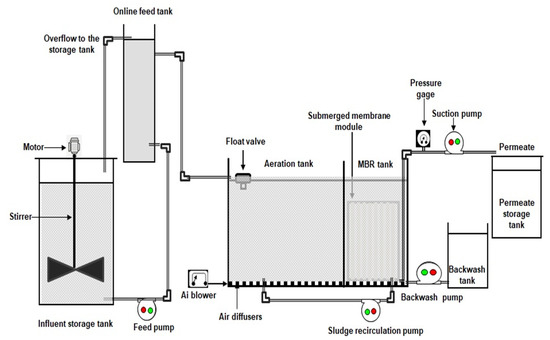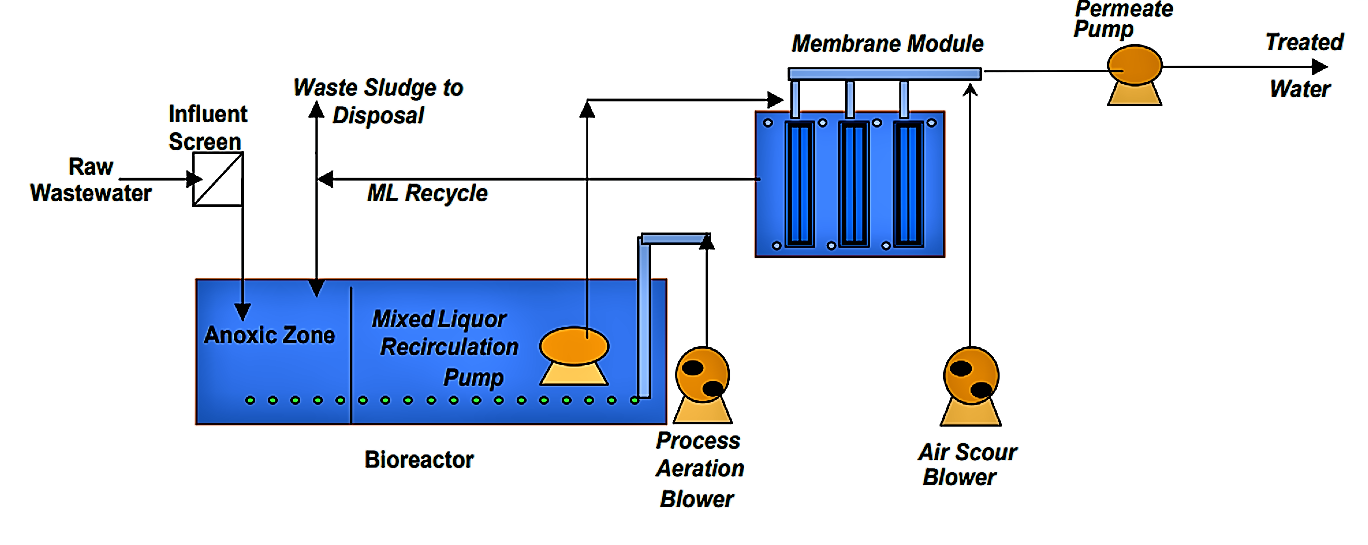Membrane Bioreactors Described: Efficient Solutions for Clean Water
Membrane bioreactors (MBRs) have arised as an advanced service for attending to the pressing challenges of wastewater therapy - Membrane Bioreactor. By incorporating biological procedures with innovative membrane purification, MBRs not just improve the quality of cured water however additionally lower the spatial demands of treatment centers.

What Are Membrane Bioreactors?
Membrane bioreactors (MBRs) are innovative wastewater therapy systems that integrate biological destruction processes with membrane filtering modern technology. This assimilation permits the effective elimination of pollutants from water, making MBRs a preferred selection in different applications, consisting of local wastewater treatment and commercial effluent management.

One of the critical benefits of MBRs is their ability to generate premium effluent, frequently ideal for reuse in irrigation or commercial processes. Furthermore, MBRs need a smaller sized footprint compared to traditional treatment systems, making them excellent for metropolitan setups where room may be limited.
In addition, MBRs can properly manage differing influent lots and are much less at risk to the effects of hazardous shocks. These qualities add to their expanding popularity as a sustainable remedy for addressing the boosting need for tidy water while minimizing environmental influences.
How Membrane Bioreactors Job
While the procedure of membrane bioreactors (MBRs) may seem facility, it fundamentally rotates around the synergy in between organic processes and membrane layer purification. MBRs integrate an organic therapy procedure, commonly activated sludge, with a membrane separation system to deal with wastewater successfully.
In an MBR system, wastewater is initial presented right into a bioreactor where microorganisms deteriorate raw material and other pollutants. The biological activity decreases the concentration of contaminants while promoting the growth of biomass. Following this biological treatment, the mixed liquor is subjected to membrane purification, which can be microfiltration or ultrafiltration, relying on the wanted effluent quality.
The membranes serve as a physical barrier, allowing water and small solutes to pass while retaining suspended solids and bigger molecules. This makes it possible for the system to maintain a high focus of biomass within the activator, improving the treatment efficiency.
In addition, the continual splitting up of cured water from the biomass helps with a compact design and decreases the impact of the treatment facility. On the whole, the mix of biological degradation and membrane layer purification in MBRs leads to reputable and effective wastewater therapy, making sure top notch effluent appropriate for various applications.
Benefits of MBR Innovation
One of the key benefits of membrane bioreactor (MBR) modern technology is its capability to produce high-quality effluent with a considerably reduced impact compared to standard wastewater treatment approaches. MBR systems successfully integrate organic treatment and membrane layer filtering, resulting in premium removal of impurities, including put on hold solids, microorganisms, and natural issue. This ability results in effluent that frequently fulfills or goes beyond stringent regulatory criteria for reuse and discharge.
Additionally, MBR modern technology permits higher biomass focus, which enhances the treatment performance and decreases the called for reactor volume. This small layout is particularly valuable in urban areas where room is restricted. The operational versatility of MBR systems likewise means they can adapt to differing influent top qualities and flow rates, making them appropriate for a vast array of applications.
Additionally, the lowered sludge production associated with MBR processes contributes to reduce functional and upkeep costs. The membranes serve as a physical obstacle, decreasing the threat of clogging and enabling longer operational periods between cleaning. Generally, the benefits of MBR innovation make it an eye-catching solution for sustainable wastewater treatment, addressing both environmental concerns and the need for efficient resource management.
Applications of Membrane Bioreactors
With their versatility and efficiency, membrane bioreactors (MBRs) find applications across various sectors, consisting of municipal wastewater therapy, commercial processes, and also water recovery. In metropolitan setups, MBRs provide a portable service for dealing with wastewater, successfully getting rid of pollutants while simultaneously creating premium effluent that meets stringent regulative standards. This makes them particularly appropriate for locations with restricted space.
In industrial applications, MBR find this modern technology is used for treating process water, specifically in markets such as food and beverage, drugs, and petrochemicals. These markets benefit from MBRs' capacity to manage high organic lots and their efficiency in recovering valuable sources from wastewater, such as nutrients and water.
Additionally, MBRs official website play a vital role in water recovery efforts, enabling the reuse of dealt with wastewater for irrigation, commercial processes, or perhaps as safe and clean water after additional treatment (Membrane Bioreactor). Their efficiency in getting rid of contaminants and virus makes them a trusted option for ensuring water high quality in various reuse applications
Future of Water Therapy Solutions
The future of water therapy options is positioned for transformative improvements driven by technical development and raising environmental recognition. As international water scarcity comes to be a pushing issue, new techniques, including membrane bioreactor (MBR) systems, are readied to play a pivotal function in boosting the efficiency and sustainability of water treatment procedures.
Arising technologies such as expert system and artificial intelligence are anticipated to optimize treatment operations, enabling real-time surveillance and anticipating maintenance. This will enhance the general integrity and performance of water treatment facilities. Improvements in membrane layer products, such as graphene and nanofiltration, assure to raise permeation prices and lower fouling, leading to reduced power intake and functional expenses.
In addition, the combination of sustainable energy sources right into water therapy plants will certainly add to greener practices. The round economy model will certainly likewise acquire traction, urging the healing of useful sources from wastewater, such as nutrients and energy.
Conclusion

Membrane bioreactors (MBRs) have actually arised as an advanced solution for attending to the pressing obstacles of wastewater treatment. By incorporating organic processes with innovative membrane filtering, MBRs not just improve the top quality of treated water yet also minimize the spatial requirements of treatment centers.One of the key benefits of membrane layer bioreactor (MBR) technology is its capability to generate premium effluent with a considerably lowered footprint compared to standard wastewater therapy methods.With their adaptability and performance, membrane bioreactors (MBRs) discover applications across numerous sectors, including local wastewater therapy, industrial processes, and even water improvement.In verdict, membrane layer bioreactors stand for a significant improvement in wastewater therapy modern technology, incorporating organic processes with efficient membrane filtering to generate high-quality effluent.
 Robert Downey Jr. Then & Now!
Robert Downey Jr. Then & Now! Brandy Then & Now!
Brandy Then & Now! Bo Derek Then & Now!
Bo Derek Then & Now! Jeri Ryan Then & Now!
Jeri Ryan Then & Now! Terry Farrell Then & Now!
Terry Farrell Then & Now!